Where should wall lights be placed in a living room?
Discover where to place wall lights in a living room for a warm and welcoming ambience


Knowing where to place wall lights in a living room can be daunting, especially when trying to establish a complete lighting scheme. We've curated expert advice to help you figure out the best positions for your wall lights to illuminate your space perfectly.
Living room wall lighting ideas play a significant role in creating your living room's ambiance. Not only does it provide valuable illumination, but a layered scheme – combining pendant lights, with wall lights and table lamps – will enable you to adapt the levels of your living room lighting to reflect the mood or time of day. However, in order to achieve this perfect balance, you need to know where to place your wall lights.
Where should wall lights be placed in a living room?
The first challenge is to figure out what purpose you want wall lights to serve: are they to be practical to provide task lighting or are you hoping to use them to highlight artwork or other decorative features? The answers to these questions will guide the style and placement of your wall lights.
'As a general rule of thumb, wall lights should be placed around 5 to 5.5 ft above floor level, while multiple wall lights should be placed around 8 to10 ft apart. You should aim for the top of the wall light to sit at eye level, to avoid glare from the exposed bulb,' recommends Rohan Blacker, founder of Pooky.
'However, this is only a general guide – if the room has particularly high ceilings (say more than 10ft), or if you’re hanging wall lights in a bathroom or bedroom, you may want to adjust these heights accordingly.'
1. Around the room to provide atmospheric lighting
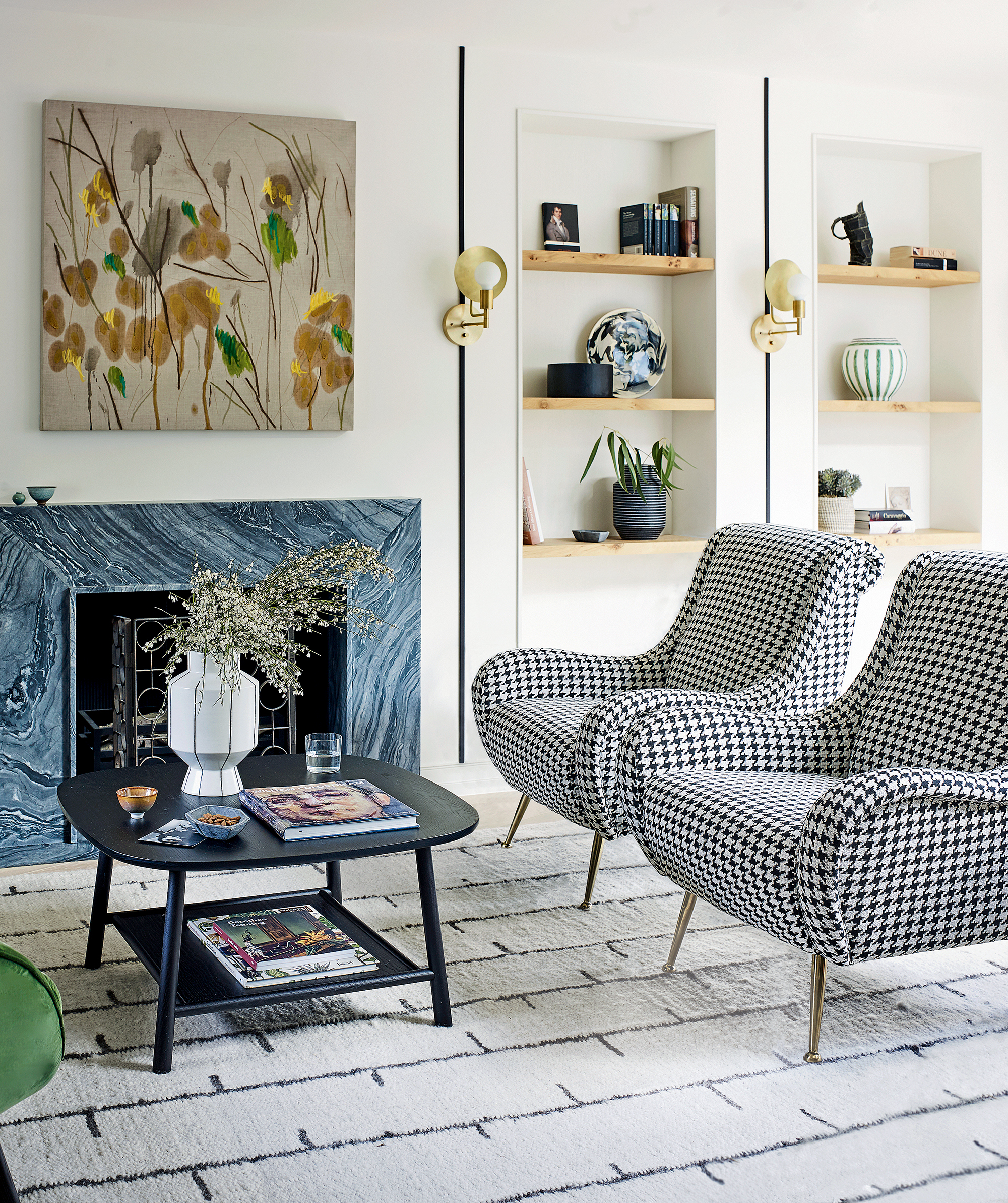
As one of the most popular living room lighting trends, wall lights make a great addition to any style of living room.
'When lighting the living room I like to place the wall lights at eye level to highlight people's faces. This is the most flattering. When you are entertaining in the room I find it important to make your guests look great and this approach achieves that!' says Nadia Watts of Nadia Watts Interior Design.
Design expertise in your inbox – from inspiring decorating ideas and beautiful celebrity homes to practical gardening advice and shopping round-ups.
‘Lighting is one of the most important elements of interior design as it can completely transform the look and feel of a room. When planning living room lighting, layer lighting and use multiple light sources to make a room flexible and versatile. Opt for dramatic pendants as your main source of light and pair with statement table lamps to create an atmospheric mood.'
2. Over art work
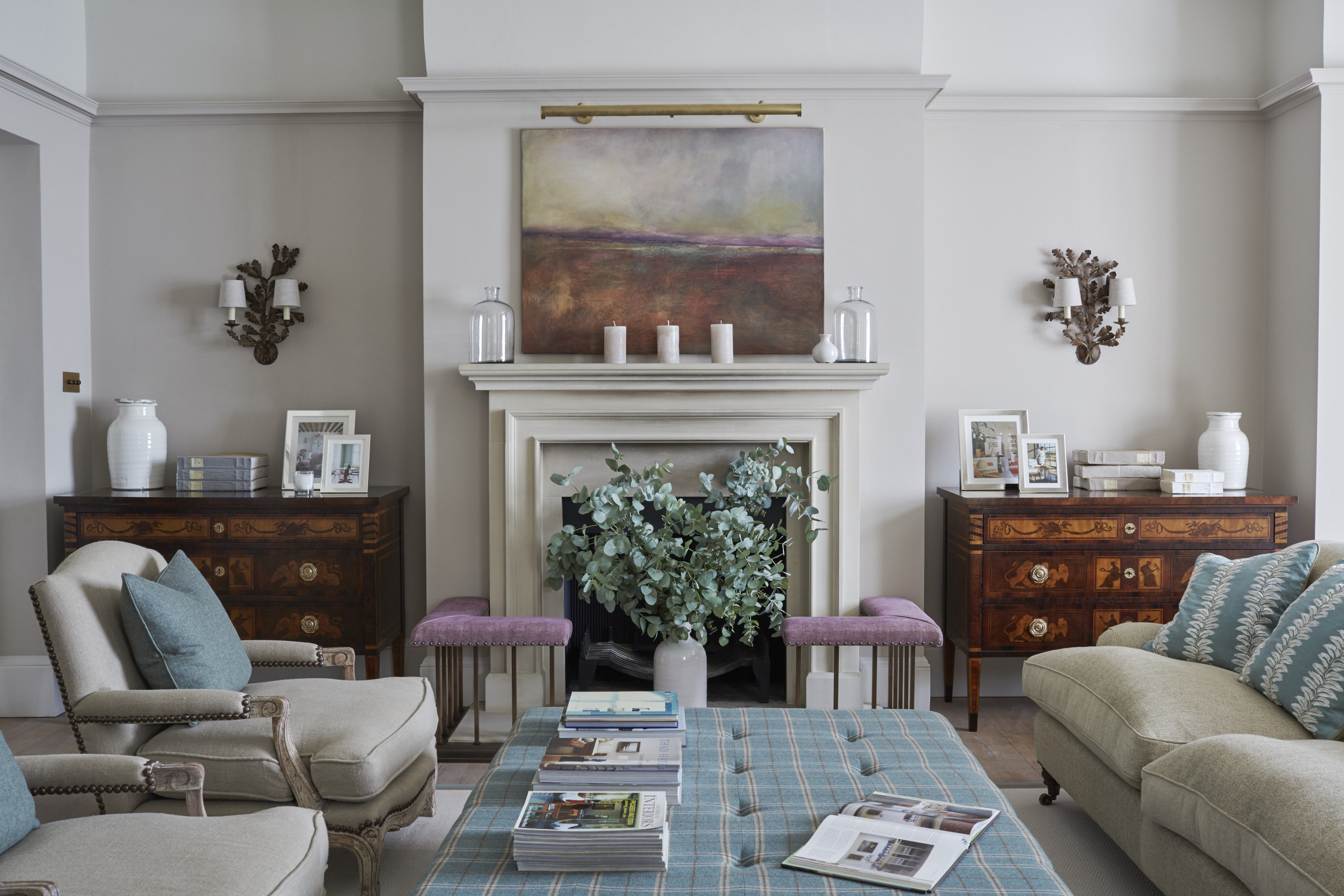
If you are looking for ways to accentuate your living room art, then place wall lights on either side or above it to prevent it from fading into the background. 'Wall lights work well as accent lighting to highlight interesting features in the room, such as art or artifacts.
Choose bold pieces featuring structural shapes, exciting textures, or colored glass to make a style statement, even if the lighting is switched off,' says Martin Waller, founder of Andrew Martin.
3. To provide task lighting
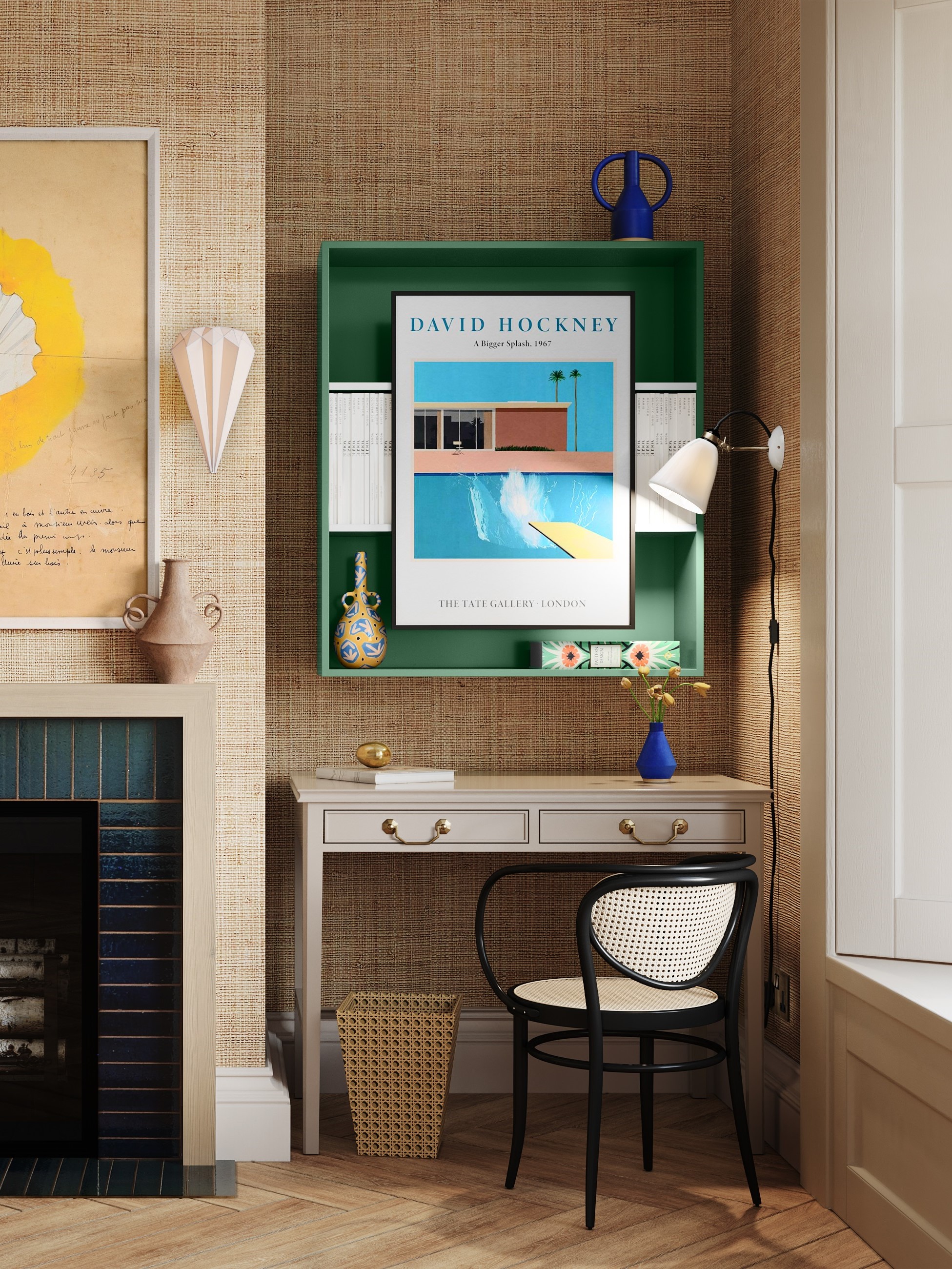
The modern living room is often a multifunctional space, incorporating spaces where you can work, read or write. While these living room corner ideas are perfect for housing a desk or table area, they can be dark and as such benefit from a well-placed wall light. Not only does a light placed on the wall next to the desk provide valuable task lighting, preventing eyestrain, but will also reduce the amount of visual clutter, keeping it looking neat and tidy.
4. To break up an empty wall
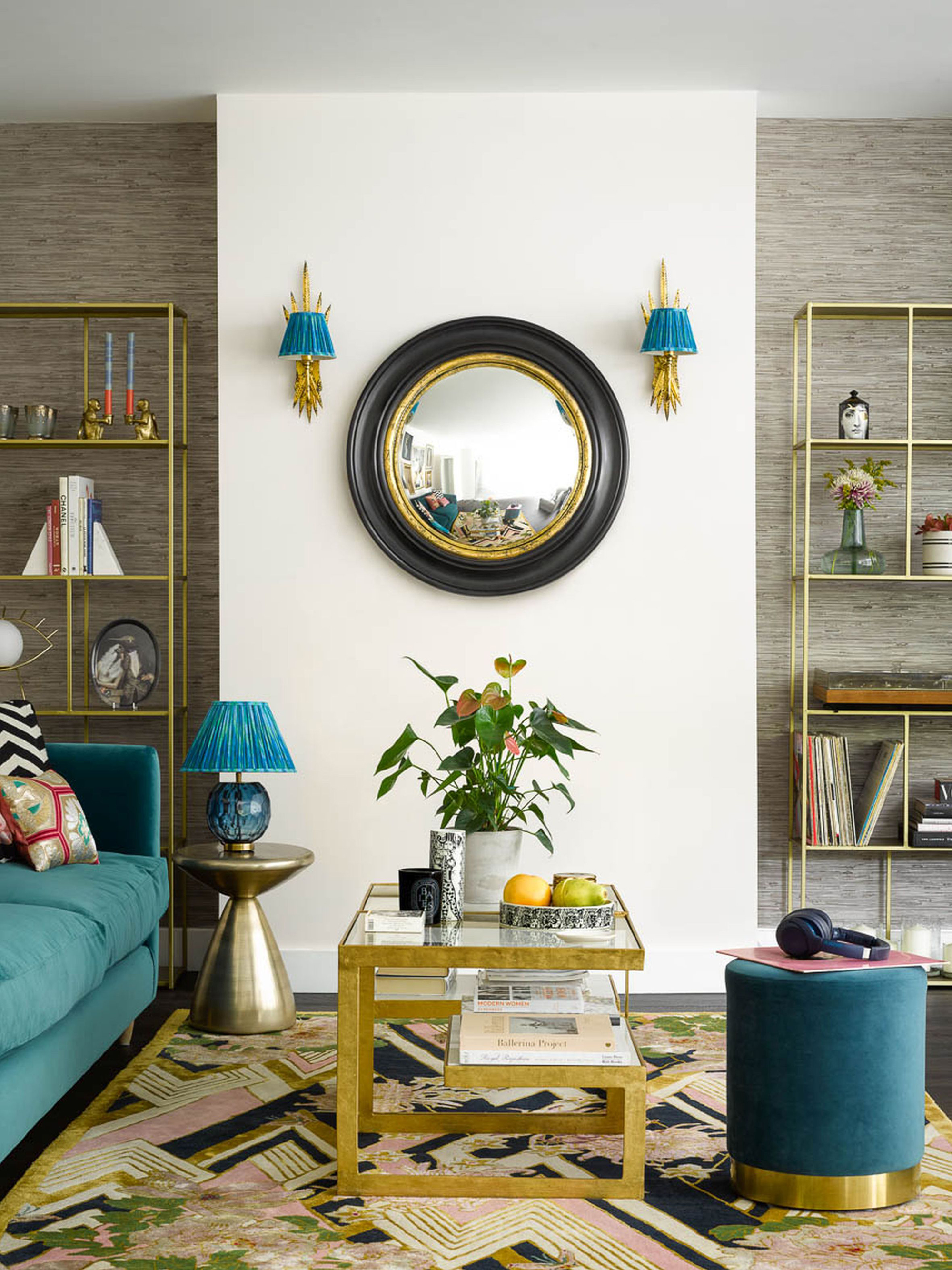
Wall lights provide valuable illumination and are a great way to make your walls attractive if placed at head height. Opt for an artistic design with colorful shades to provide an extra dimension to your living room wall ideas.
‘Discrete and atmospheric, wall lights take little space and can provide a decorative flourish. We have seen lovely examples of customers using wall lights in pairs or trios along the length of their walls, framing cabinets or ornate mirrors, and paired alongside floor lamps – all of which look stylish and unique while creating various levels of illumination.
Depending on the style you are looking for, consider whether you want to incorporate decorative, statement silhouettes or if you prefer a more minimal solution. Plan for this early in the design process, as you will need to factor in the wiring of each fixture,’ says Helen Pett, design ambassador at Arteriors London.
5. Next to the window

The style of your wall lights will also determine their placement. 'Clear glass or crystal designs will maximize the light. Position a transparent wall light near a window and you can emphasize the natural light during the day too,' says Peter Legg lead designer, dar lighting. 'Faceted or multi-layered fittings are also a great choice as they will reflect the beam across the room. Team this style in front of a frameless mirror, and you'll have rays darting all around.'
6. Position wall lights either side of a focal point
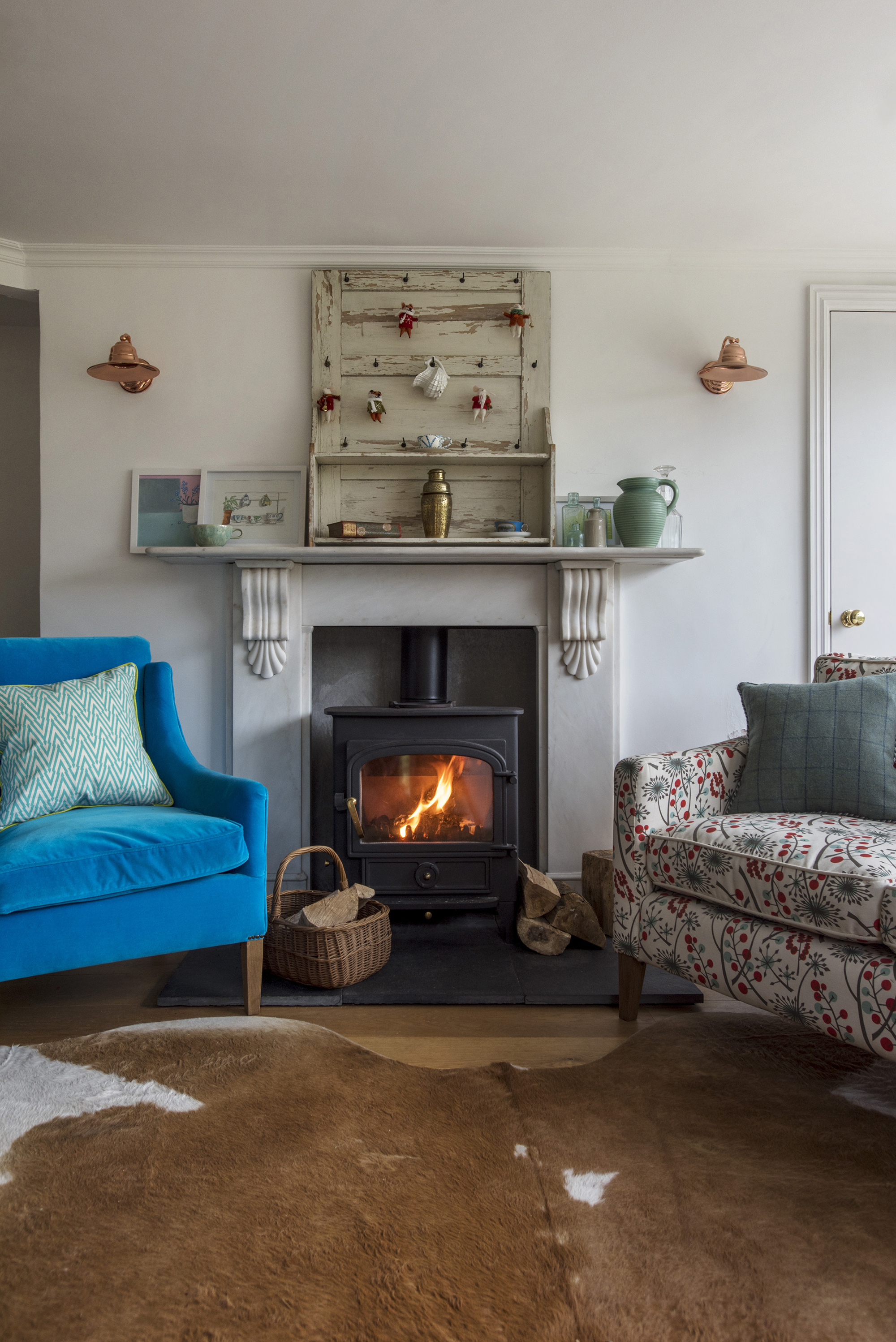
Every living room will have a focal point – typically the fireplace or the television. To accentuate this point in the room, place two wall lights at equal distances on either side of the focal point. When watching TV or relaxing in front of the fire, opt for just the wall lights for a softer lighting scheme and a cozy atmosphere.
7. By an armchair to create a reading nook
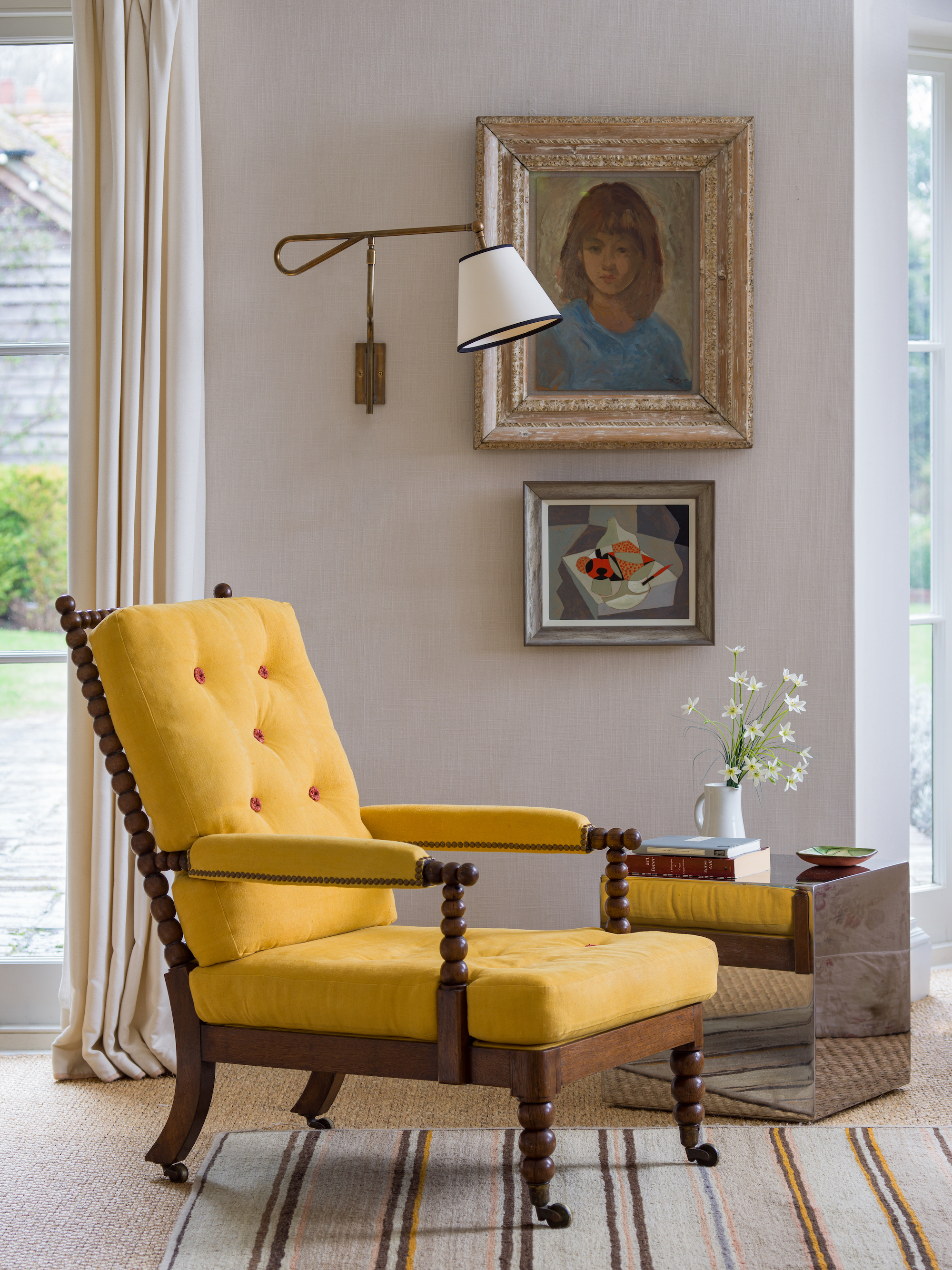
No living room is complete without a reading nook. All you need is a cozy armchair, a small side table, and a well-placed wall light to create the perfect spot to settle down and enjoy your latest paperback. When placing a wall light to serve as a task light, install it lower than head height – somewhere between shoulder and waist height – and select a swing arm design so it can be adjusted if needed.
8. Position wall lights above alcoves
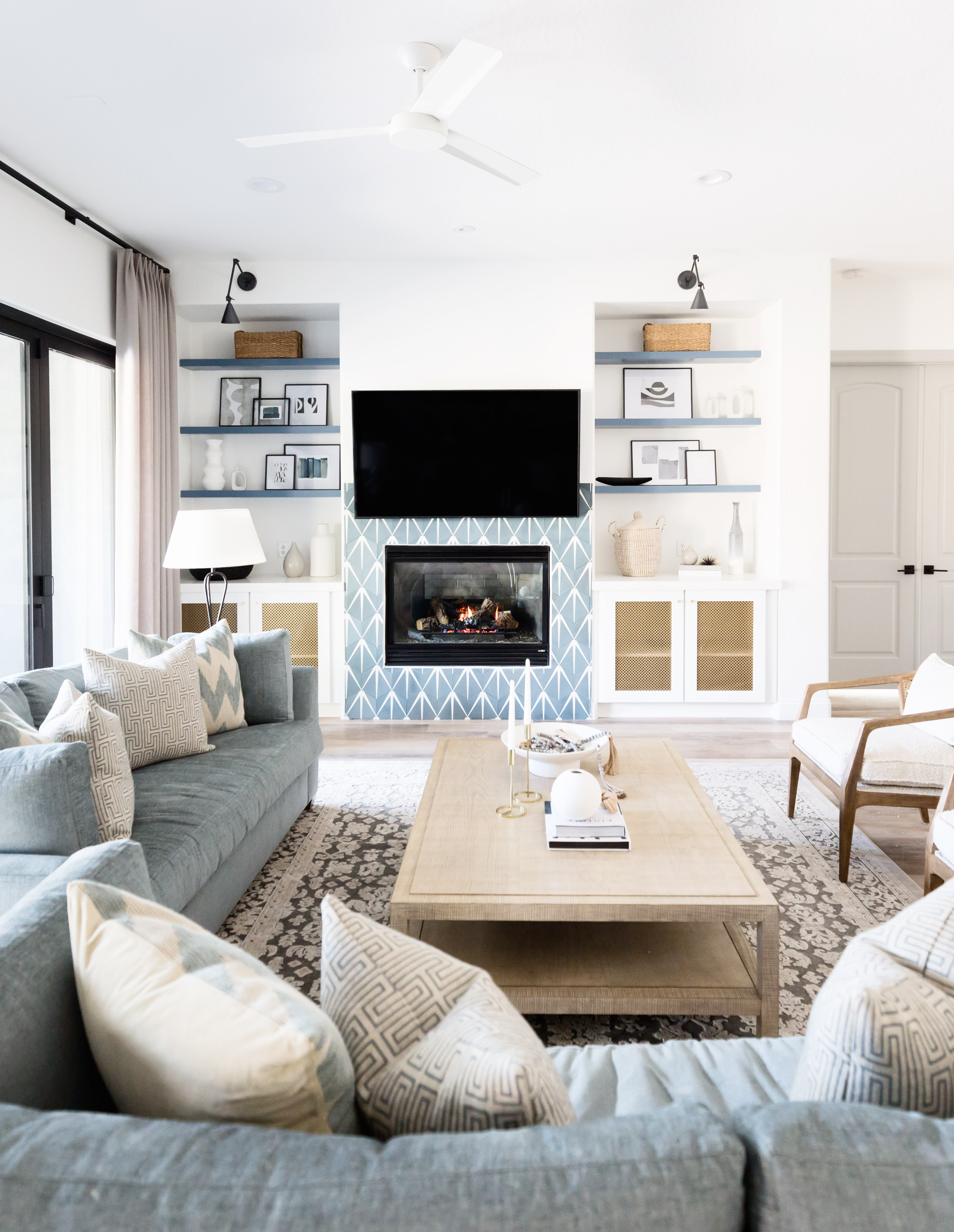
Recessed into the wall, alcoves are often darker than the other parts of the room and therefore benefit from additional lighting. No matter which alcove ideas you decide to incorporate into your room, pair them with a wall light to provide additional illumination to this space. As well as brightening the darker corners, these wall lights will also highlight your living room alcove ideas making a focal point of this architectural element.
Do people still have wall lights?
Yes, people still have wall lights, which are a vital part of a layered lighting scheme. In fact, wall lights have become increasingly popular as a way to illuminate specific aspects of a room's design and create an atmosphere with your lighting.
Can you put wall lights anywhere?
Yes, you can put wall lights anywhere – though you will need the assistance of an electrician. Unlike ceiling lights, which need to go in the center of the room, or lamps that are defined by their proximity to sockets and furniture, wall lights can be positioned anywhere they are needed – whether that's practically or aesthetically.

Having graduated with a first class degree in English Literature, Holly started her career as a features writer and sub-editor at Period Living magazine, Homes & Gardens' sister title. Working on Period Living brought with it insight into the complexities of owning and caring for period homes, from interior decorating through to choosing the right windows and the challenges of extending. This has led to a passion for traditional interiors, particularly the country-look. Writing for the Homes & Gardens website as a content editor, alongside regular features for Period Living and Country Homes & Interiors magazines, has enabled her to broaden her writing to incorporate her interests in gardening, wildlife and nature.